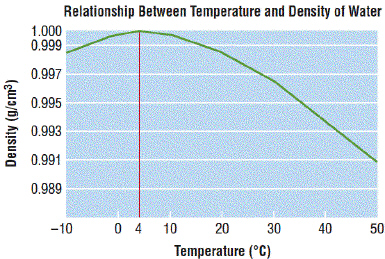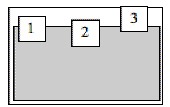Multiple Choice
Identify the
choice that best completes the statement or answers the question.
|
|
|
1.
|
In a block of ice, the molecules are
a. | vibrating back and forth, but remaining more or less in one
location | b. | freely sliding past one another, but remaining close together | c. | completely
motionless | d. | extremely disorganized with no recognizable pattern to their
locations |
|
|
|
2.
|
Of the following, the pure substance is
a. | fog | b. | milk | c. | lead | d. | chocolate |
|
|
|
3.
|
Which is a quantitative observation?
a. | The object is a white cylinder. | b. | The object is as long as my
finger. | c. | The substance is a transparent liquid. | d. | The material is powdery and easily blown by the
wind. |
|
|
|
4.
|
A physical property
a. | can only be determined with quantitative measurements | b. | can only be
determined with qualitative observations | c. | can only be determined using quantitative or
quantitative measurements | d. | must be observed and measured with instruments,
not human senses |
|
|
|
5.
|
Which is a physical change?
a. | dissolving salt into water | b. | cutting a piece of wood | c. | melting candle
wax | d. | all of the above |
|
|
|
6.
|
Which best explains how the viscosity of a liquid like water changes as it is
heated?
a. | At higher temperatures, water molecules move more slowly, making the water more
viscous. | b. | At higher temperatures, water molecules move faster, making the water less
viscous. | c. | At higher temperatures, water molecules move more slowly, making the water less
viscous. | d. | At higher temperatures, water molecules do not move faster or slower, so the
viscosity of water does not change. |
|
|
|
7.
|
If the mass of the cube shown is 172.80 g, what is its density?  a. | 0.37 g/cm3 | b. | 14.4 g/cm3 | c. | 2.70
g/cm3 | d. | 0.07 g/cm3
|
|
|
|
8.
|
Cubes A and B are uniform throughout and come into perfect balance on a two pan
scale as shown. How do the densities of the two objects compare?  a. | Object A has the greater density. | b. | Object B has the greater
density. | c. | The objects have the same density. | d. | There is not enough information to
tell. |
|
|
|
9.
|
Which best explains what happens to the density of water between 30
oC and 40 oC as shown in the graph?  a. | The mass of a water sample decreases over this range. | b. | The mass of a water
sample increases over this range. | c. | The volume of a water sample decreases over
this range. | d. | The volume of a water sample increases over this
range. |
|
|
|
10.
|
A piece of silver is observed to be scratched, bent, and coated with tarnish.
Which is the chemical change?
a. | getting scratched | b. | getting bent | c. | getting coated with
tarnish | d. | none of the above |
|
|
|
11.
|
Which is opaque?
a. | a slab of wood | b. | window glass | c. | pure
water | d. | air |
|
|
|
12.
|
Which would be least viscous?
a. | molasses | b. | ketchup | c. | white wood
glue | d. | water |
|
|
|
13.
|
Three solid objects of uniform, but different, compositions are floating in
water as shown. What can be said about their densities?  a. | They all have the same density. | b. | They all are denser than
water. | c. | Object 3 is less dense than objects 1 and 2. | d. | Object 3 is less
dense than water, while objects 1 and 2 are denser than water. |
|
|
|
14.
|
Which is something that a solution and mechanical mixture have in common?
a. | They both are made of one kind of particle. | b. | They both are made
of different kinds of particles. | c. | They both look speckled or
chunky. | d. | They both look uniform throughout. |
|
|
|
15.
|
An alloy is an example of a
a. | solution | b. | mechanical mixture | c. | pure
substance | d. | none of the above |
|